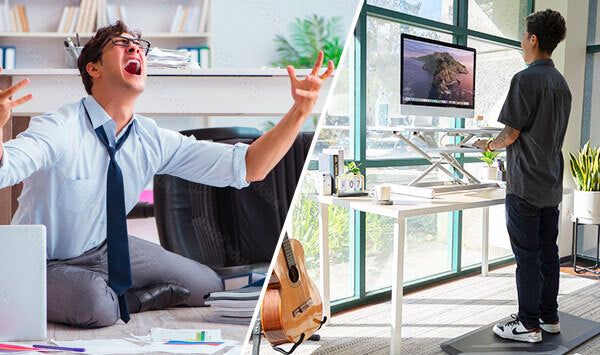By Firat Ozkan, Co-Founder & CMO
Who does not want to be productive, innovative and efficient and get work done quickly and with the best result? The way your office workspace is set up plays a more important role in work efficiency than you might think. A few adjustments can make a big difference, not only to your team’s productivity but also to employee health and happiness.
One size fits all? Not in workplace design!
A workspace that fits everyone's individual needs is key for comfort and productivity and ultimately employee happiness. Therefore, consider investing in height adjustable sit-stand desks, monitor mounts with gas spring technology and ergonomic chairs that can all be adjusted to the individual’s needs for them to work in comfort throughout the day. An ergonomic desk set-up that enables the user to switch between sitting and standing can reduce the risk for headaches, back and neck pain and at the same time increase energy levels.
How to achieve good posture
First, assess your own workstation and start with your chair and desk. Adjust your chair’s height so that your thighs are parallel to the floor with a 90 degree angle. Your feet should be flat on the ground. Next, raise or lower your desk so that your elbows are at a 90-100 degree angle. If your desk is not height adjustable, you might have to consider readjusting your chair and use a foot rest for support. Next, position your computer monitor an arm length away from you with the top edge of your monitor on eye level. A monitor arm or monitor stand can help you find the ideal position and angle. Lastly, move your keyboard close to the front edge of the desk and your mouse to the same level and close to the keyboard to avoid overstretching your arms and shoulders.
Other key factors
Aside from ergonomics, creating an efficient workspace involves several other key elements, including organization and technology. By considering all of these elements and implementing them in your workspace, you can create an environment that is comfortable, functional, and productive.
- Organization: A cluttered workspace can be distracting and reduce productivity. Keep your workspace clean and organized with desk accessories such as desk organizers, filing cabinets, and other storage solutions.
- Technology: Ensure that you have the necessary technology to be productive, such as a high-quality computer, monitor, and peripherals. Consider using a dual-monitor setup to increase productivity and improve multitasking capabilities.
- Lighting: Proper lighting can reduce eye strain and improve overall comfort. Use natural light when possible, and consider using a desk lamp or task light to supplement any areas that are too dark.
- Comfort: Personalize your workspace with comfortable accessories like a mouse pad, keyboard wrist rest, a footrest, and an ergonomic lumbar support.
- Adjustability: Consider a standing desk or a desk with adjustable height, to be able to change positions throughout the day.
- Take breaks: Taking frequent breaks can help to reduce stress and improve productivity. Set reminders to take short breaks throughout the day, and use that time to stretch, walk, or do something else that you enjoy.
By considering these elements and implementing them in your workspace, you can create an environment that promotes health, efficiency, and productivity. Remember that an efficient workspace is one that is tailored to your specific needs and preferences, so take the time to experiment with different setups and find what works best for you.

